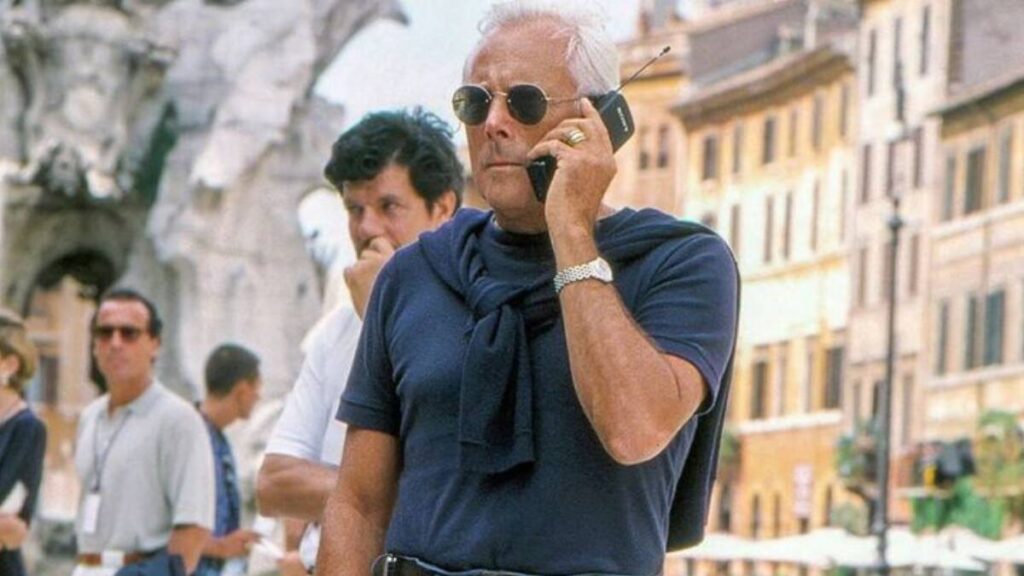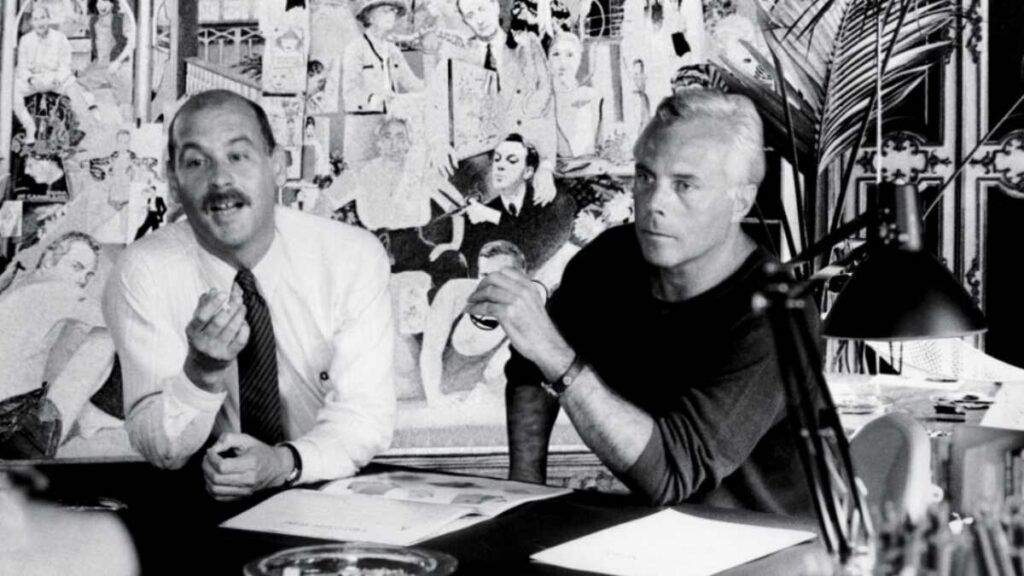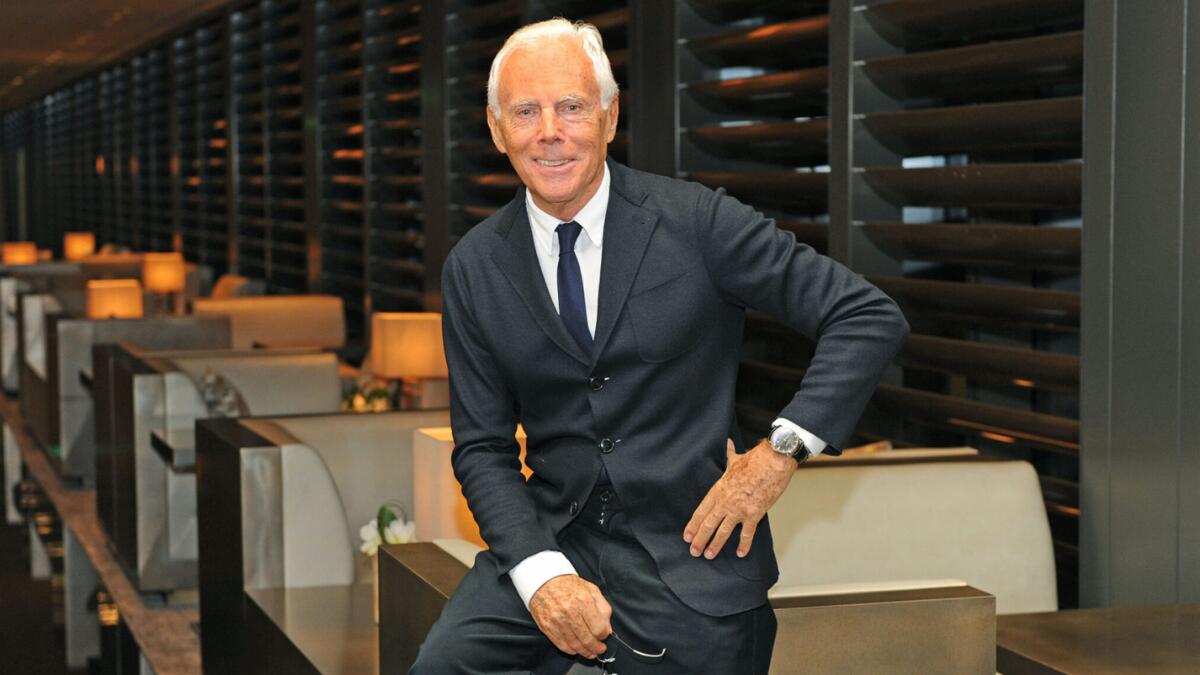In the world of fashion, few names carry the quiet thunder of Giorgio Armani. More than just a designer, Armani has become a symbol of restrained power—a man who built an empire not by shouting, but by tailoring silence into elegance. In 2025, with a net worth soaring well into the billions, his fortune is not merely a tally of success, but a testament to the endurance of vision over trend.
From the structured shoulders of the 1980s power suit to the refined palette of Armani Privé, every stitch tells a story of calculated evolution. But behind the fabrics and fragrance bottles lies a business acumen just as precise. Armani remains one of the rare designers who has retained full ownership of his fashion house, steering it like a couturier-captain through shifting cultural tides and economic downturns.
In this article, we’ll dissect the anatomy of Armani’s wealth—where it comes from, how it compares, and why it endures. But more than that, we’ll explore the creative and commercial brilliance that transformed an Italian window dresser into a global icon of taste and fortune. This is not just a net worth breakdown. It’s the legacy of a man who tailored his empire.
Net Worth in 2025: Dissecting the Armani Financial Portfolio
As of 2025, Giorgio Armani’s net worth is estimated at $11.8 billion, according to Forbes. But what makes that figure remarkable isn’t just the amount—it’s the architecture behind it. Armani’s fortune is like one of his tailored suits: sleek, deliberate, and built to endure.
At the core is Giorgio Armani S.p.A., the privately held company he founded in 1975. Unlike many of his contemporaries who sold to luxury conglomerates, Armani maintained full ownership—a rare feat in fashion’s high-stakes arena. This independence has allowed him to scale the business on his terms, with estimated annual revenues exceeding $2 billion globally.
His empire spans a spectrum of sub-brands—Armani Exchange, Emporio Armani, and Armani Privé—each tailored to different market segments. This multilayered strategy brings in both aspirational shoppers and haute couture clientele, creating a wide funnel of recurring revenue. But Armani’s business acumen didn’t stop at the runway.
He’s also invested heavily in luxury real estate and hospitality, launching the Armani Hotels in Dubai and Milan. These ventures aren’t vanity projects; they’re brand extensions that reinforce his aesthetic in architecture, lifestyle, and global capital markets.
Then there’s licensing, especially in eyewear, fragrances, and cosmetics—areas where Armani’s influence touches millions of consumers daily. While these products sell for less than a bespoke suit, their volume and margins are staggering.
In essence, Armani’s portfolio reads like a diversified investment strategy—creatively driven, but commercially optimized. His wealth isn’t just built on luxury; it’s sustained by control, vision, and a refusal to dilute his brand in an era obsessed with fast growth. That’s why his financial legacy, like his designs, remains timeless.
The Breakdown – Assets, Brands, and Holdings That Define His Wealth
Giorgio Armani’s financial empire is less a single monolith and more a curated gallery of assets—each one meticulously designed to serve a distinct purpose within his greater vision. At the foundation lies Giorgio Armani S.p.A., the parent company that oversees a family of brands spanning from Armani Privé, the couture pinnacle, to Armani Exchange, the accessible gateway for younger consumers. Each label is strategically positioned like a tier in a luxury pyramid, catering to a full spectrum of style appetites while preserving the brand’s elite aura.
Then there’s the fragrance and cosmetics segment, driven by long-standing licensing agreements with L’Oréal. This category, often overlooked in traditional fashion circles, generates immense recurring revenue, bringing Armani into the homes (and bathrooms) of millions daily. The eyewear and watch licenses further expand brand touchpoints across global markets.
Armani’s real estate and hospitality ventures, including the ultra-modern Armani Hotels in Milan and Dubai, signal his ambition to shape lifestyle, not just wardrobes. Unlike more flamboyant designer ventures—like the maximalist Versace hotels—Armani’s properties echo his signature minimalism: understated, quietly luxurious, and fiercely consistent with his core brand identity.
Together, these assets form a balanced ecosystem—each one reinforcing the others, all bound by a shared design language and unwavering control. Armani doesn’t just sell fashion; he sells a world.
From Designer to Mogul – The Billionaire Leap
Giorgio Armani’s ascent from celebrated designer to global mogul didn’t hinge on a single breakthrough—it unfolded through a series of bold, calculated moves that redefined what a fashion house could be. One of the earliest came in the late 1970s, when Armani co-founded his company with just $10,000 and an uncompromising vision: to maintain creative control without diluting integrity.
But it was his savvy understanding of pop culture that accelerated the leap. Dressing Richard Gere in American Gigolo wasn’t just a styling coup—it was a brand launch heard around the world. Armani seized on Hollywood exposure before it was a norm, aligning his aesthetic with cinematic cool.
By the 1990s, he had expanded into fragrances, eyewear, and ready-to-wear in a way that preserved exclusivity while scaling accessibility. What set him apart wasn’t just ambition—it was the discipline to scale slowly, staying private, independent, and fiercely consistent. In the luxury world, that’s a power move few dare to make.

From Sketchpad to Skyline: How Armani Built a Global Empire
The Unlikely Rise – From Department Store Window Dresser to Brand Founder
Long before his name adorned skyscrapers and perfume bottles, Giorgio Armani stood behind the glass—not in front of it. In the 1950s, fresh out of a brief stint in medical school and with no formal design education, Armani took a job dressing windows at La Rinascente, Milan’s high-end department store. It wasn’t glamorous, but it was formative. He absorbed the rhythm of retail, the nuance of light and texture, the psychology of what drew people in. That eye for storytelling—quiet, precise, effective—would shape his entire career.
What set Armani apart wasn’t flash or flamboyance. It was control. Even in those early days, colleagues recalled his relentless attention to detail and ability to edit until only the essential remained. One lesser-known story involves Armani sketching menswear silhouettes not for praise, but to solve a problem: how to make structure feel effortless.
He didn’t dream of fame—he obsessed over form. That obsession paid off when he began working under Nino Cerruti, where he developed his signature soft tailoring. Armani’s rise wasn’t meteoric. It was measured, intentional. He didn’t force his way into the fashion world. He redesigned its entrance—and then walked through it.
Scaling Through Sub-Brands – Armani Exchange, Emporio Armani & More
Armani didn’t just expand—he diversified with surgical precision. Understanding that luxury wasn’t one-size-fits-all, he developed a brand ecosystem that spoke to different lifestyles without diluting his core identity. Emporio Armani became the sleek, fashion-forward bridge between high-end and wearable, targeting trend-conscious professionals. Armani Exchange, launched in the early ’90s, reached a younger, more urban audience with accessible pricing and bold streetwear cues.
The genius wasn’t just in creating tiers—it was in maintaining aspiration at every level. Each sub-brand offered a taste of Armani’s aesthetic: clean lines, muted palettes, and understated luxury. Yet none felt like a compromise. Instead, they functioned like chapters of the same story, adapted for different readers.
Where many designers struggled with brand erosion as they scaled, Armani’s segmentation strategy preserved exclusivity while welcoming global expansion. It wasn’t just business—it was brand architecture, executed with the precision of a tailor’s chalk line.
Global Reach – Flagships, Franchises, and the Power of the Armani Name
Armani’s rise to global dominance wasn’t just about exporting fashion—it was about exporting a feeling. With surgical timing and cultural intuition, he expanded beyond Milan, opening flagship stores in fashion capitals like New York, Tokyo, and Paris. Each space was more than retail—it was a temple of brand philosophy, reflecting the same refined minimalism found in his designs.
In markets like China and the Middle East, Armani was early to plant his flag—often through strategic partnerships and joint ventures that balanced local insight with brand control. His name became shorthand for “Italian luxury,” even in regions where fashion legacies were still emerging.
Unlike trend-driven brands, Armani scaled with restraint. He didn’t over-license or overextend; instead, he curated his global presence, ensuring consistency across continents. Wherever you saw the Armani name—on a storefront, hotel, or fragrance—it meant the same thing: timeless sophistication, delivered with purpose.
Also See: Top 50 Richest Designers in the World
Creative Genius Meets Commercial Strategy: The Armani Business Philosophy
Staying Private in a Public World
In an industry where IPOs are often treated like rites of passage, Giorgio Armani’s refusal to take his company public is more than a quirk—it’s a strategic stance. By keeping Giorgio Armani S.p.A. privately owned, he’s preserved something far rarer than capital: creative sovereignty. Without shareholders to satisfy or quarterly earnings to chase, Armani has had the freedom to grow at his own pace, stay true to his minimalist ethos, and protect the integrity of his brand across decades.
This level of control has allowed him to say no—to overexposure, to fast fashion, to trends that would compromise legacy. For entrepreneurs, Armani’s choice offers a powerful lesson: sometimes the greatest value isn’t in scale, but in stewardship. In a public world ruled by short-term metrics, Armani plays the long game—and wins by staying selective.
The Minimalist Marketing Machine
In a luxury landscape filled with maximalist logos and influencer-heavy campaigns, Armani’s marketing stands apart—quiet, consistent, and almost architectural in its restraint. There are no flashy rebrands or seasonal gimmicks. Instead, Armani has built a brand identity around timeless minimalism, where the message is embedded in the product, the store design, the typography, even the lighting.
This “less is more” philosophy isn’t just aesthetic—it’s commercial strategy. While competitors chase virality, Armani cultivates longevity. His campaigns rarely scream; they whisper with intention, leaning into moody imagery, elegant models, and clean storytelling. The result? A brand that hasn’t just endured—it’s matured.
By refusing to flood the market or compromise his visual language, Armani has created cultural authority. His name evokes quiet confidence, and his customers wear it like a personal signature—not a shout, but a statement. In the luxury space, that kind of brand discipline is its form of power.
Style That Sells: High Fashion Meets Mass Market
Giorgio Armani didn’t just design clothes—he designed a vision of elegance that ordinary people could access without compromising its mystique. In the early 1980s, when Richard Gere strutted across the screen in American Gigolo clad in fluid, softly tailored Armani suits, the world didn’t just admire the look—they wanted to live in it. That moment wasn’t just cinematic; it was strategic. Armani had found a way to translate high fashion into cultural currency.
He soon extended his reach beyond the runway. Fragrances and cosmetics, developed with L’Oréal, turned luxury into a daily ritual. Department store exclusives and diffusion lines like Armani Exchange put his clean silhouettes and muted palettes in malls across the globe. But the magic was in the balance: he scaled access, not excess.
Unlike brands that dilute through mass production, Armani’s offerings at every price point still reflect his design DNA—restraint, refinement, and structure. His ability to meet the mass market without losing artistic clarity lies in how he curates, not just creates. Whether it’s a $4,000 suit or a $90 bottle of cologne, it all feels unmistakably Armani.
He didn’t just bring luxury to the public—he redefined what everyday luxury could look and feel like.

The Armani Standard vs. The Fashion Elite: Net Worth Comparisons in 2025
In 2025, Giorgio Armani’s net worth—estimated at around $11.8 billion—positions him among fashion’s financial elite. Yet how he earned that fortune stands in stark contrast to his peers. Ralph Lauren, worth approximately $11.3 billion, shares Armani’s founder-led legacy, but has operated within the public markets since taking his company public in 1997. Meanwhile, Miuccia Prada, co-chief executive of Prada Group, holds an estimated net worth near $5 billion, with wealth tied to family holdings and a luxury house that, while creatively influential, doesn’t match Armani in direct control or diversification.
Then there’s Bernard Arnault, the chairman of LVMH and one of the richest individuals on the planet, with a net worth exceeding $155 billion. But Arnault is not a designer—he’s a consolidator. His empire is built by acquiring and scaling heritage brands like Louis Vuitton, Dior, and Fendi under a single luxury umbrella.
Armani sits in a unique space between these models. Unlike Lauren or Prada, he has resisted IPOs. Unlike Arnault, he builds rather than buys. His empire remains entirely self-founded and privately owned, allowing him to shape his legacy without outside interference.
That autonomy has come with tradeoffs—slower growth, fewer headlines—but also with remarkable brand consistency and creative purity. Armani may not own dozens of labels, but the one he does own has become a global language for luxury. In a market increasingly driven by conglomerates, Armani remains a singular force—proof that a designer with vision can also be a mogul with full control.
Beyond the Runway: Philanthropy, Legacy, and Private Passions
Beneath the precision of Giorgio Armani’s brand lies a man deeply committed to purpose—not just profit. While he rarely seeks the spotlight outside of fashion, Armani has quietly directed portions of his fortune toward causes that reflect his values: dignity, resilience, and responsibility.
During the COVID-19 pandemic, Armani was one of the first major designers to pivot factory operations to produce medical garments and personally donated millions to Italian hospitals. It wasn’t a PR move—it was a reflection of his enduring loyalty to Italy and its people. His philanthropic work often focuses on healthcare, disaster relief, and cultural preservation, areas where his support is steady but understated.
Sustainability has also become central to his legacy. In recent years, Armani has pushed for slower production cycles, less waste, and more ethical sourcing—decisions that reflect both environmental concern and a deeper belief in lasting design.
And as the question of succession looms, Armani has made moves to ensure his company’s values outlive him. With no children, he’s begun transitioning elements of his business into a foundation aimed at preserving the brand’s independence and cultural integrity.
Armani’s impact extends beyond what we wear—it touches how we think about leadership, legacy, and the responsibility of wealth.
My Encounter with the Armani Brand
The first time I walked into an Armani boutique, I didn’t buy a thing, but I walked out changed. It was Milan, just off Via Montenapoleone, and the store felt more like a modern gallery than a retail space. There was no loud music, no aggressive sales pitch—just silence, structure, and soft light falling on garments that looked like sculpture. I remember running my hand over a navy blazer, the fabric so fine it almost resisted touch.
What struck me wasn’t just the clothes—it was the atmosphere. Everything was intentional, pared down, designed to make you feel composed. I didn’t need a tuxedo or a fragrance to carry that energy with me; I had already absorbed it.
Years later, I bought my first Armani piece—a black cashmere scarf—and every winter since, it’s been a quiet ritual of elegance. It doesn’t shout “fashion.” It whispers identity.
That’s the power of Armani: it’s not about dressing up, but about leveling up internally. You don’t wear the brand for attention. You wear it because something about it reflects who you already are—or who you aspire to be.
What Giorgio Armani’s Fortune Says About Luxury and Legacy in 2025
Giorgio Armani’s fortune in 2025 isn’t just a number—it’s the quiet echo of decades spent mastering the art of restraint. In an age where excess is often mistaken for success, Armani reminds us that true luxury lies in discipline, clarity, and vision that outlasts the moment. His empire wasn’t built on flash or noise, but on precision and consistency, on knowing when to expand—and when to hold back.
What sets Armani apart is that his legacy isn’t tethered solely to market trends or seasonal fame. It’s embedded in the very DNA of his brand: a belief in quality over quantity, subtlety over spectacle, and ownership over compromise. That philosophy, applied over 50 years, became its kind of wealth—resilient, refined, and deeply personal.
For designers, entrepreneurs, or anyone mapping their journey, Armani offers a compelling blueprint: don’t chase the world—shape it quietly, and let it come to you. His story isn’t just about fashion or finance. It’s about building something that endures not because it shouts, but because it never needed to.
In the end, Armani didn’t just tailor garments—he tailored a legacy.
Nishant is a digital strategist and celebrity finance analyst with over 15 years of experience in SEO-driven content. As Founder of TheNetWorths.com, he creates high-authority profiles on wealth, branding, and cultural influence.
















3 thoughts on “Giorgio Armani Net Worth 2025: How the Fashion Icon Built a $11.8 Billion Empire”